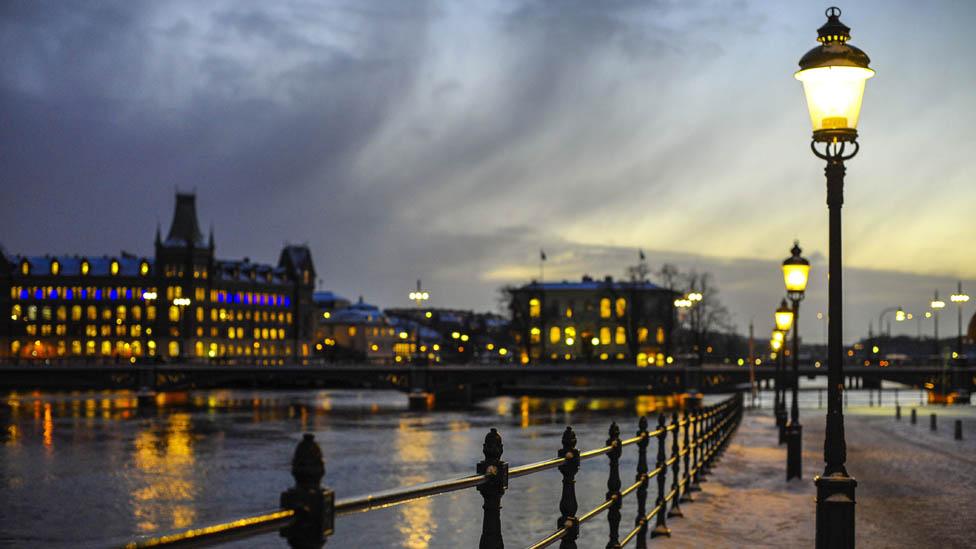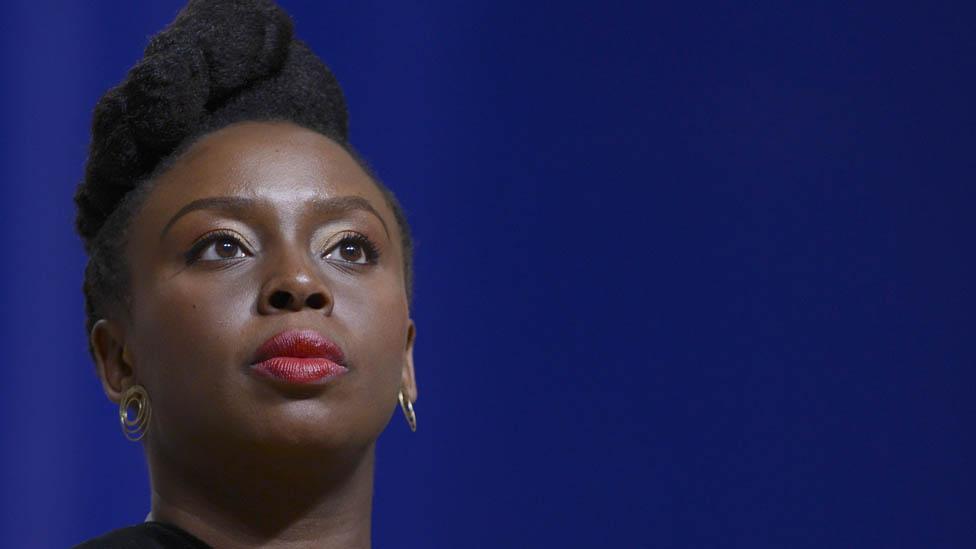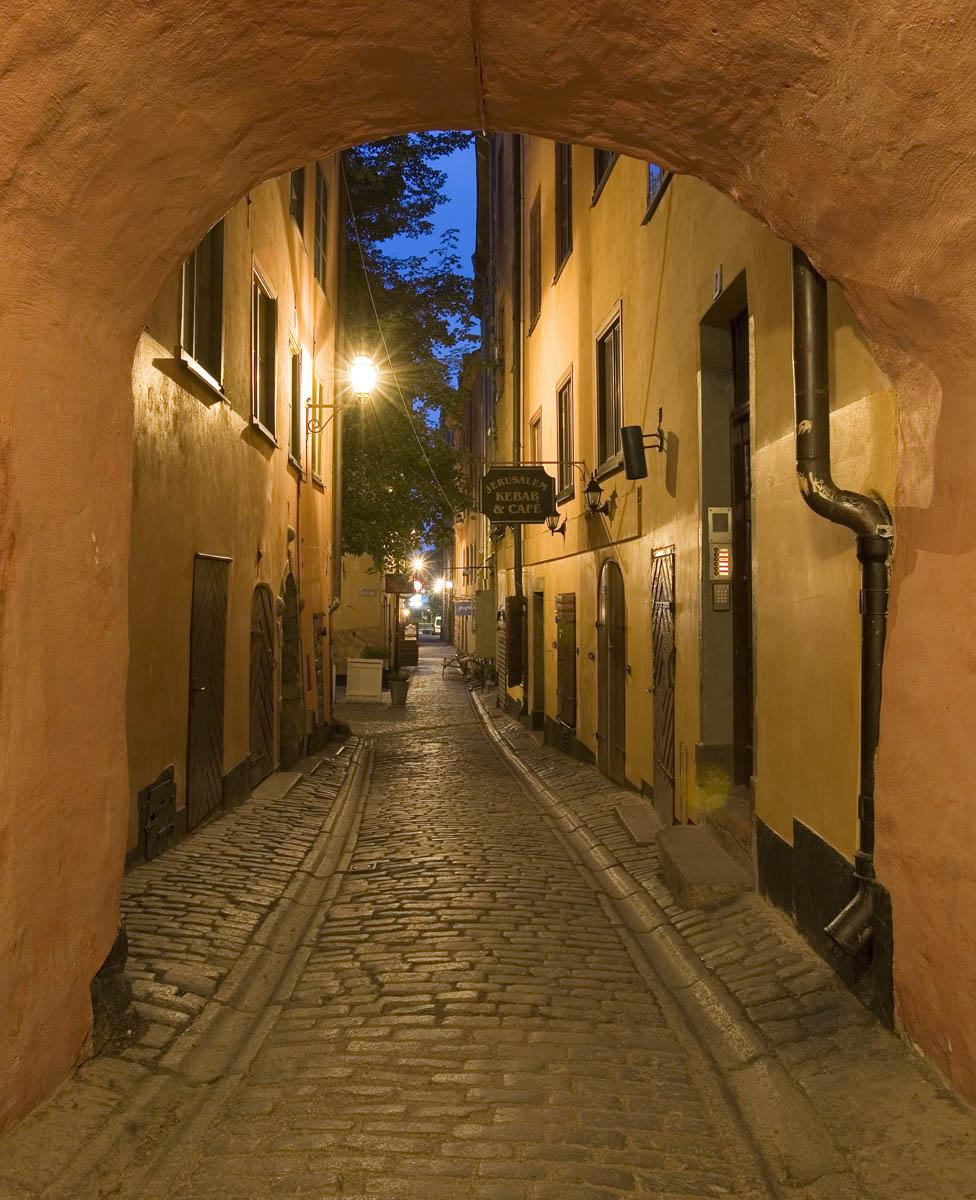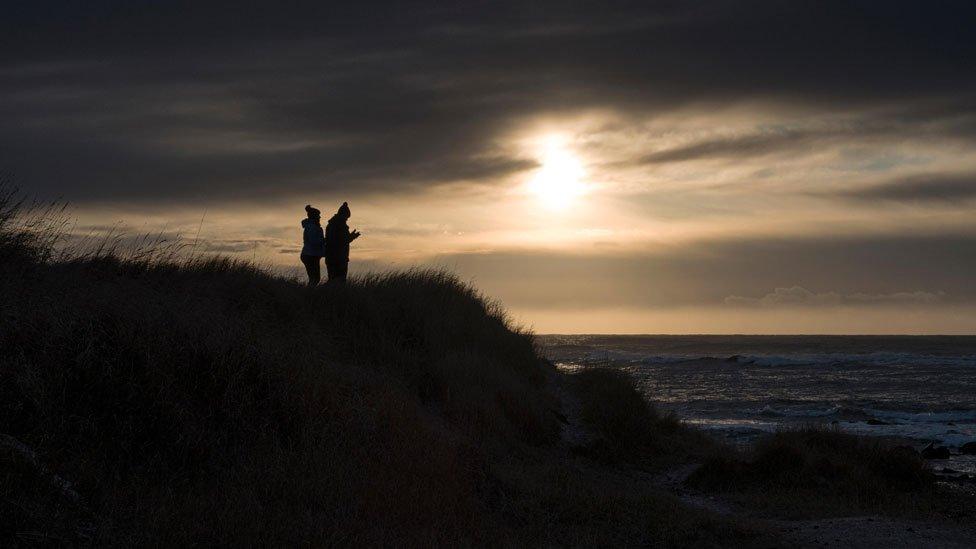The night I met a troll in Stockholm
- Published

Looking back on it now, I think it might have been a real live troll I saw that late summer's night in Stockholm. He was of slight build and dressed all in black. I tried calling out to him, but he ran off, seemingly more scared of me than I was of him…
But I'm getting ahead of myself.
Long before there were people who sat at computers abusing other people online, there were real trolls in the world and they lived in Scandinavia.
I learned about them as a child. My mother, whose own mother was half-Swedish, would read to me from an old book written in an unfamiliar language. The yellowing pages, which smelled of dust and magic, were filled with pictures of what looked like giant gnomes, huddled around fires or skulking in caves.
They had pot bellies and pockmarked skin, long curly hair and large drooping noses. It was said they could be enticed out of the forest by the smell of coffee and bacon. Some were benign, others malign, but none of them looked anything like the creature that ran away from me outside the Culture House in central Stockholm that evening.
Which is probably why I didn't make the connection immediately.

Trolls predate the arrival of Christianity in Scandinavia by many centuries. Probably millennia. But when it did arrive, and traditional folklore was adapted to suit the times, the trolls too changed their behaviour.
They developed a hatred of church bells. It was said they couldn't stand the smell of Christians. People told stories of rocks hurled at places of worship under construction - sabotage by angry trolls.
Were these works of pure imagination? Or were these real people opposed to a radical new belief system, one that would sweep away the power of the pagans in favour of an unfamiliar foreign faith? And did those dissenters perhaps retreat into the forests to live beyond the reaches of the new social norms?
Perhaps.
The creature in black emerged out of the shadow of the Culture House into a pool of light beneath an advertising hoarding. His pale face flashed briefly under a dark cap that was pulled down close over his eyes. The face that stared back at him from the billboard was giant by comparison.
That face belonged to the Nigerian writer Chimamanda Ngozi Adichie. A few years ago every 16-year-old in Sweden was issued with a copy of her essay, We Should All Be Feminists.

Chimamanda Ngozi Adichie
Adichie's call chimed with the aims of the Swedish government, itself an avowedly feminist administration, and led by the same party that has governed Sweden for much of the last century. Under the left-leaning Social Democrats, Sweden became a beacon for people around the world who defined their politics as "progressive" - economically left-leaning and socially liberal.
It was a radical new belief system. Most Swedes adopted it with fervour. At least in public.
But this country has not been immune to the polarisation that has swept through other Western democracies. The European refugee crisis of 2015 was a turning point. That year, Sweden invited in more migrants per capita than even Germany.
The consensus was - it was the right thing to do. After all, this is a wealthy country that prides itself on being a "humanitarian superpower".

But from deep in the forest, there came rumblings of dissent. The first to give voice to these concerns were the Sweden Democrats, a party with its roots in the neo-Nazi movement. Perhaps because of that, those dissenting voices were quickly dismissed as the ravings of fringe racists - views beyond the bounds of acceptable norms.
But even as the migration crisis has eased, the voices of dissent have grown louder. What has all this to do with Chimamanda Ngozi Adichie? Nothing really, except perhaps that her foreignness, her blackness, and her feminism, somehow mark her out as an icon, a pictorial incarnation of the liberal values of openness and inclusivity that have become something close to a national religion in Sweden.

Find out more
From Our Own Correspondent has insight and analysis from BBC journalists, correspondents and writers from around the world
Listen on iPlayer, get the podcast or listen on the BBC World Service, or on Radio 4 on Saturdays at 11:30 BST

The creature in black looked furtively about him. From an inside pocket he pulled out a strip of paper and stuck it on to the poster, directly over Adichie's eyes.
It was then that he noticed me.
I wouldn't have thought much of it, if it hadn't been for his strange reaction - he began walking away at a fast pace.
"Hey!" I called after him. I was just curious. He ducked into a side street and broke into a run.
I chased after him, our footsteps clattering over the cobblestones, but I lost him down an alleyway by the side of a churchyard.
I wandered back up to the poster. The strip of paper had two words printed on it: "Nej. Ut." Which means: "No. Out."

More from From our own Correspondent

Surveys suggest that more than half of Icelanders believe in, or at least entertain the possibility of the existence of, the Huldufolk - the hidden people. Mainly they're a peaceable breed, it's said, but if you treat them with disrespect, for example by blasting dynamite through their rock houses and churches, they're not reticent about showing their displeasure.
Why Icelanders are wary of elves living beneath the rocks (2014)

Watch Gabriel Gatehouse's Newsnight report from Sweden:
Is Sweden a Utopian dream or a multicultural nightmare?
Join the conversation - find us on Facebook, external, Instagram, external, YouTube, external and Twitter, external.
